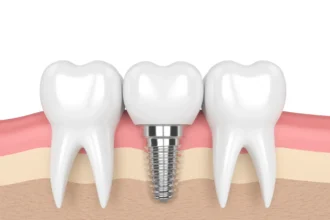In this day and age of desk sitting (or scrolling), it’s easy to lose track of time and forget about how immobilization affects our body and mind. Many people think exercise is important for physical fitness, but it has just as significant, if not more, an impact on mental health.
Doing just a little physical activity allows you to stay mentally sharp, respond to stress better, and reduces the discomforts of stiffness from not moving. So, let’s explore the various mechanisms that regular body movement works, and why developing a regular exercise habit may be one of the best things you can do for your health and well-being.
Why Movement Isn’t Just for the Body
The relationship between your brain and body is a constant one. Every time you start to move, your body releases a chemical known as serotonin, along with some endorphins, which can have a great effect on your overall mood, and relieve some tension from your mind and body almost immediately. At the same time as physical activity is taking place, the stress hormones (cortisol) produced by your body decreases so you will remain calm and clear-headed, even as days become increasingly hectic.
You don’t always have to go get a workout, or sweat in a gym in order to get these benefits either. A brisk walk, light stretching, or a silly dance party around your living room is sometimes all it takes to get just enough physical activity. The key is that you are moving – and when you start to create a habit of moving, you too will be moving along with your brain and body on the daily.
How Exercise Builds Mental Resilience
Emotional resilience refers to your ability to remain grounded and recover from perceived inability to manage stress or adversity. Emotional resilience is not about avoidance of life and all of its challenges – it is about increasing capacity to deal with life’s challenges.
Exercise enhances emotional resilience by establishing predictable routine, lengthening out the inevitably overwhelming days of uncertainty and structure. Exercise allows the body and mind to rest; rest at a time when your body, mind, and even your heart are collectively taking a break, when you can allow the emotional reset while engaging in healthy movement. There is evidence that people who exercise or engage in movement every single day notice improved sleep quality, improved concentration, and feel they are emotionally less challenged.
Movement is also a factor in influencing the number of symptoms that may be related to high levels of the stress response. The impact of an extremely high stress response may produce excessive frequent tension headaches or even migraines. Although movement does allow the stress be used rather than stored to relieve it over time, there will be those days; days when the symptoms show up anyway. On these days, ultimately the options for instant migraine relief may provide a fast solution, but there are also long-term lifestyle patterns as well.
The Link Between Inactivity and Everyday Aches
If you have ever gotten up and felt tightness in your low back, sore shoulders, or stiff legs from sitting for too long, know that you are not alone! Thousands of people find themselves in similar situations every day. Typically, these discomforts are the product of too little movement, not too much!
By remaining in one position for a long period, you are naturally going to get tighter in that position, circulation will reduce, and mobility in the joints will decrease as well. When this happens, our bodies then start to feel aches, which will sometimes start off as subtle and then become constant over time.
One particularly common issue associated with inactivity is foot pain in the morning. Many people wake up and wonder why their feet hurt when they wake up, and the reason is often because of poor circulation, tight muscles, and stiffness from sleeping all night. Daily activity—especially gentle stretching and walking—can help alleviate some of that discomfort by keeping the lower body moving and more flexible throughout the day.
Easy Ways to Add More Movement into Your Day
You don’t need to overhaul your life or commit to long workouts to start seeing (and feeling) the benefits of movement. These small, realistic habits can go a long way:
- Take short breaks every hour to stand, stretch, or walk—even just for a few minutes.
- Do light stretching after you wake up to ease stiffness and signal your body to get moving.
- Choose movement-based errands when possible—take the stairs, walk to the store, or do your phone calls while pacing.
- Try low-impact exercises like yoga, bodyweight circuits, or evening walks to unwind and promote recovery.
The key is consistency. Movement doesn’t have to be intense to be effective. In fact, regular low- to moderate-intensity activity often provides the best results for both physical ease and emotional clarity.
Final Thoughts: Movement Is a Mindset, Not Just a Task
Understanding your exercise performance from a fundamental lens, it isn’t simply about performance. It’s a powerful tool to help you offset stressors from life (both mentally and physically). It helps you keep grounded, sleep better, and feel an increased sense of agency over your energy output and emotions.
Find the zone you are at. Whether it be addressing the stress you may be incurring, preventing pesky niggles, or simply feeling balanced, simply increasing your movement will benefit. Perfection is not the goal; consistency is.
In return: Less aches or pains, better clarity, and a more resilient you.

















